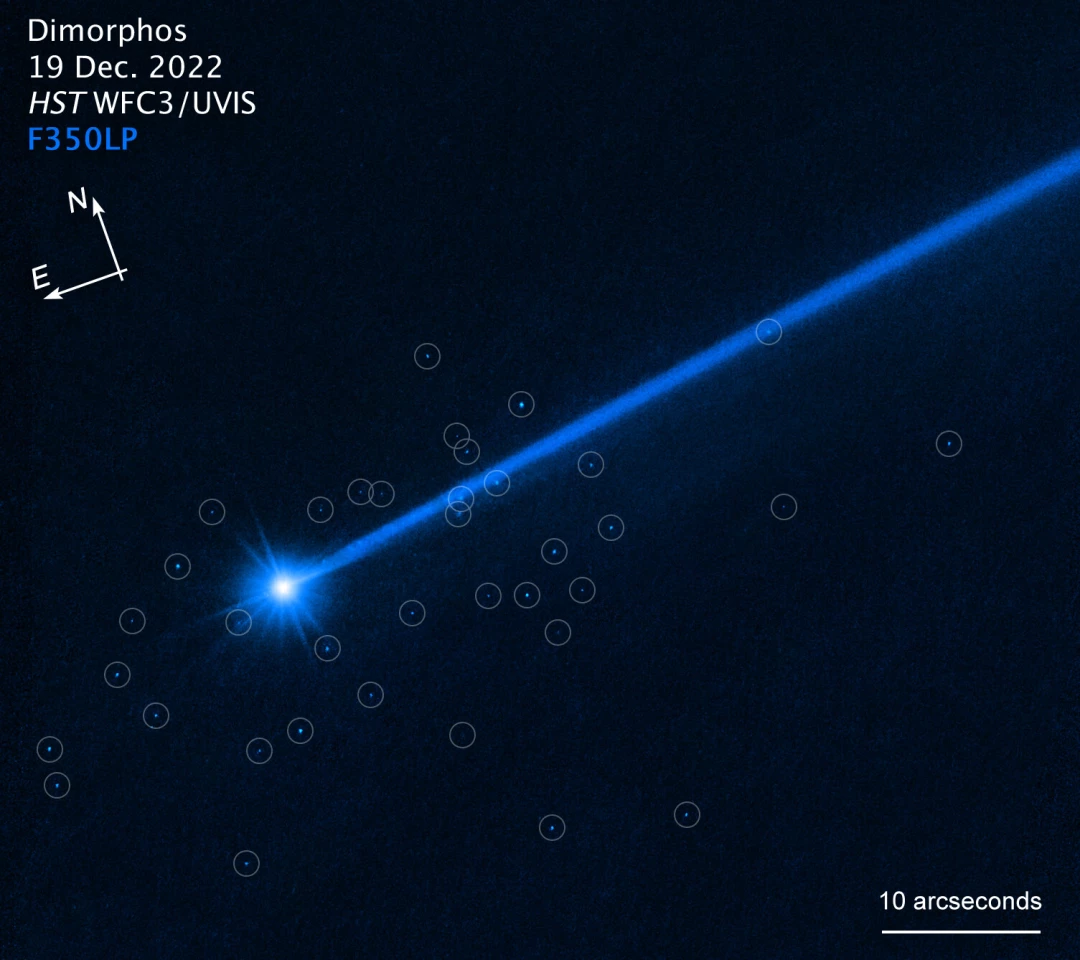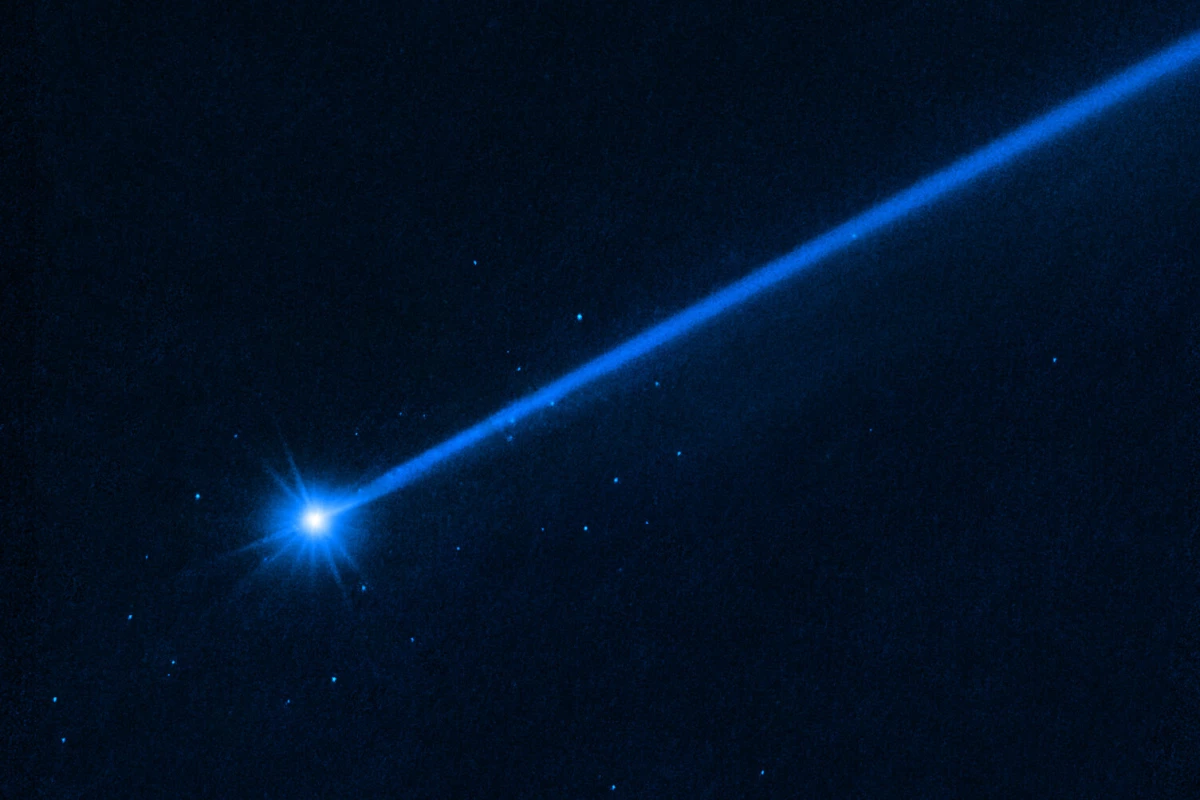After focussing on an asteroid that was struck in 2022 by a half-tonne NASA robotic probe traveling over seven times faster than a bullet, the Hubble Space Telescope has detected a swarm of 37 boulders that were dislodged by the impact.
On September 26, 2022, NASA's Double Asteroid Redirection Test (DART) deep space probe deliberately collided with the asteroid Dimorphos at about 22,500 km/h (14,000 mph) as part of a demonstration test to examine whether it is possible to alter the trajectory of dangerous asteroids so that they don't hit the Earth.
Dimorphos was chosen because it's a small asteroid about the size of the Great Pyramid of Giza and orbits a much larger asteroid called Didymos. The idea was that the impact would shift the orbital trajectory of Dimorphos and allow scientists to calculate how effective such a deflection mission could be.
However, there was more to DART than just playing billiards with cosmic balls. A real deflection mission would have to deal with a lot of factors that need to be taken into account. One of these is the composition of the asteroid, because a solid one will respond differently from one that's just a ball of debris.

When the Hubble looked at Dimorphos, it saw the asteroid had a bright tail of dust that was being pushed away by the pressure of sunlight, like the tail of a comet. That was to be expected, but the telescope also saw 37 ejected boulders between a meter and 6.7 m (3 and 22 ft) in diameter, looking like a small constellation of stars. According to ESA, these boulders make up about 0.1% of the total mass of Dimorphos.
The space agency says that it's unlikely that the boulders are shrapnel broken off by the impact. It's more probable that they were already scattered on the asteroid's surface and were seen by DART two seconds before impact at an altitude of 11 km (7 miles) above the surface. It's estimated that the collision dislodged 2% of the boulders sitting on the asteroid either by a seismic wave that shook them loose or by the direct impact.
What this suggests is that Dimorphos may consist of debris left over from the formation of Didymos. This formed into a ring that later coalesced into a mass that has a structure similar to a bunch of grapes loosely held together by gravity.
Whatever the answer is, it raises more questions for ESA's upcoming mission to Didymos and Dimorphos to sort out.
Source: ESA






